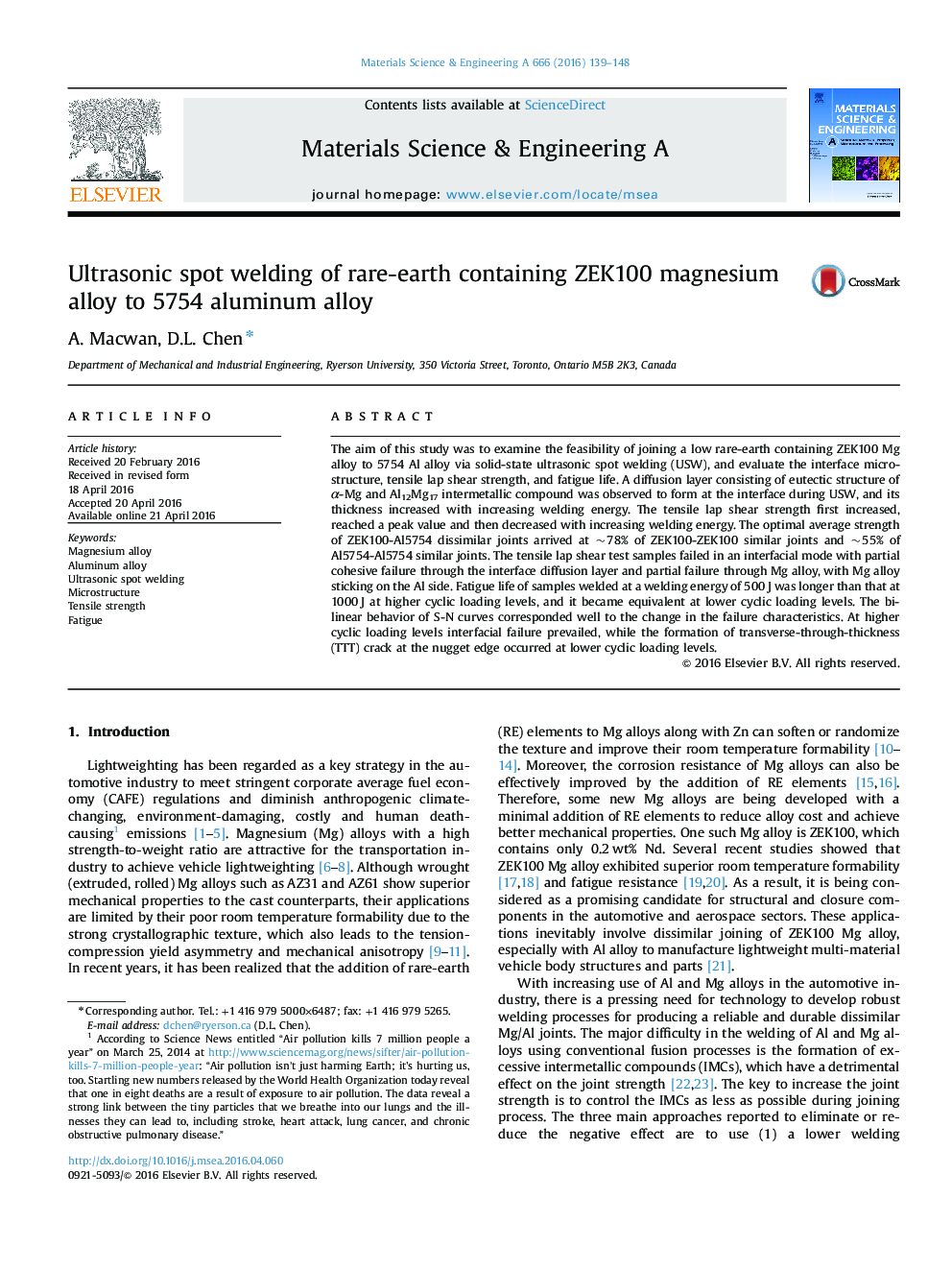| Article ID | Journal | Published Year | Pages | File Type |
|---|---|---|---|---|
| 7975408 | Materials Science and Engineering: A | 2016 | 10 Pages |
Abstract
The aim of this study was to examine the feasibility of joining a low rare-earth containing ZEK100 Mg alloy to 5754 Al alloy via solid-state ultrasonic spot welding (USW), and evaluate the interface microstructure, tensile lap shear strength, and fatigue life. A diffusion layer consisting of eutectic structure of α-Mg and Al12Mg17 intermetallic compound was observed to form at the interface during USW, and its thickness increased with increasing welding energy. The tensile lap shear strength first increased, reached a peak value and then decreased with increasing welding energy. The optimal average strength of ZEK100-Al5754 dissimilar joints arrived at ~78% of ZEK100-ZEK100 similar joints and ~55% of Al5754-Al5754 similar joints. The tensile lap shear test samples failed in an interfacial mode with partial cohesive failure through the interface diffusion layer and partial failure through Mg alloy, with Mg alloy sticking on the Al side. Fatigue life of samples welded at a welding energy of 500 J was longer than that at 1000 J at higher cyclic loading levels, and it became equivalent at lower cyclic loading levels. The bi-linear behavior of S-N curves corresponded well to the change in the failure characteristics. At higher cyclic loading levels interfacial failure prevailed, while the formation of transverse-through-thickness (TTT) crack at the nugget edge occurred at lower cyclic loading levels.
Related Topics
Physical Sciences and Engineering
Materials Science
Materials Science (General)
Authors
A. Macwan, D.L. Chen,
